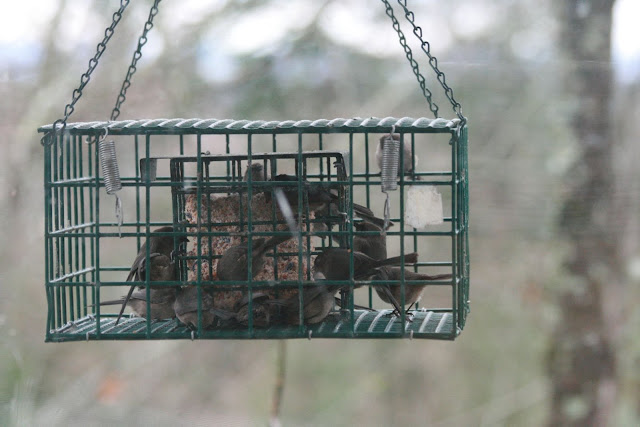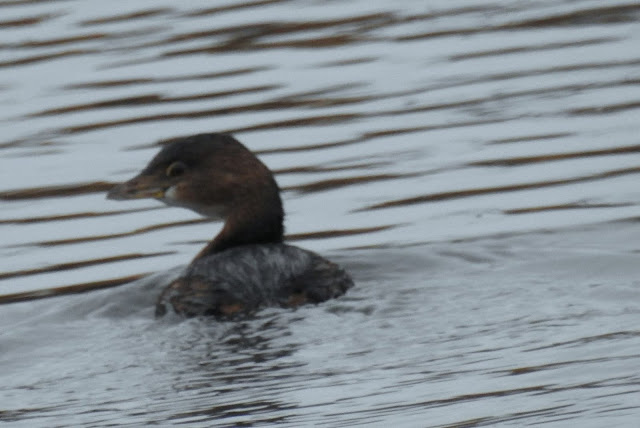After checking in, I looked for the Black-crowned Night Herons just off the trail to the right. As usual, they were sleeping, but they were more out in the open than usual.
Black-crowned Night Heron - Reifel Bird Sanctuary
2017 Bird # 48
A common Dabbling Duck at Reifel is the American Wigeon. Dabbling Ducks feed in shallow ponds on plant matter and insects. They are the ones that have their heads in the water and their rear ends facing upwards.
American Wigeon - Reifel Bird Sanctuary - 2017 Bird # 49
Sandhill cranes are common sights at Reifel, they mix in with the crowds. I always get nervous when they're around small children but there don't seem to be any incidents.
Sandhill Crane - Reifel Bird Sanctuary - 2017 Bird # 50
Here's a movie of one feeding on the bird seed that litters the ground.
If you're looking for House Sparrows, the entrance to Reifel is a good place to find this European Species. I don't know if the abundance of seed attracts them, but they are much scarcer in the rest of the Sanctuary.
House Sparrow - Reifel Bird Sanctuary
Reifel is one of the best places to see the Ring-necked Duck. This photo shows the orange band around the neck that gives them their name.
Ring-necked Duck - Reifel Bird Sanctuary - 2017 Bird #51
Out on the large pond to the North there were some ducks perched on a floating log. Amongst them was a male Common Merganser.
Common Merganser - Reifel Bird Sanctuary - 2017 Bird # 52
During the winter the Golden-Crowned and White-crowned Sparrows are abundant on the Lower Mainland. This Golden-crowned is still in it's Basic (non-breeding) plumage.
Golden-crowned Sparrow - Reifel Bird Sanctuary
I was now halfway down the East Dyke trail. There is a turnoff to the south that takes you deeper into the forested area. I noticed a couple of photographers looking up into the trees and went over to investigate. They were shooting a flock of small finch like birds. They confirmed that they were Common Redpolls.
These are a northern species that is closely related to the Pine Siskin. We've had an irruption of Redpolls and Crossbills from the north this winter. I started snapping photos, but the light was poor and the birds were moving constantly.
Common Redpoll - Reifel Bird Sanctuary - 2017 Bird # 53
Here's another shot, other than the red on the head, they are quite similar to Pine Siskins.
I returned to the main trail and met up with some people looking up into a dark area of a large tree. There was a Great Horned Owl up there. The photo below was the best I could get as it was facing away from us.
Great Horned Owl - Reifel Bird Sanctuary - 2017 Bird # 54
I started heading back to the entrance and was able to get a more open shot of a Common Redpoll.
Further along there was a Male Wood Duck that looked like he was losing his head.
Wood Duck - Reifel Bird Sanctuary
And here's a couple of pairs of Wood Ducks, enough to play bridge if they could find a table and some cards.
Finally, many people visit Reifel so they can feed the birds. It's very common to see Chickadees eating out of people's hands. I've started to see Red-winged Blackbirds doing the same.
But I've never seen this before:
This ended my visit to Reifel and my birding for this weekend.





















































